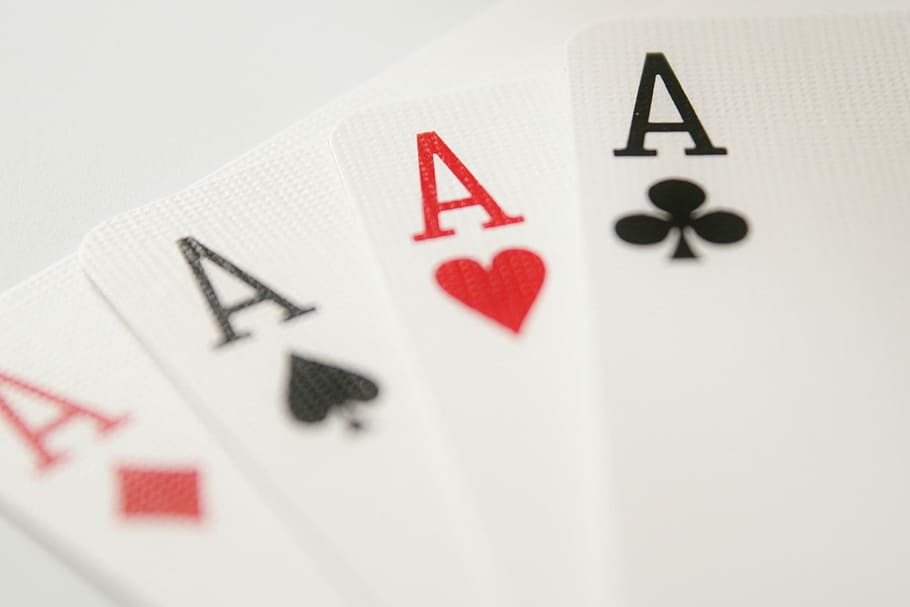| ♣ | ♦ | ♥ | ♠ |
|---|---|---|---|
| green | blue | red | black |
| black | yellow | red | green |
| blue | orange | red | black |
| blue | yellow | red | black |
| green | orange | red | black |
| green | yellow | red | blue |
| pink | orange | red | black |
A four-color deck (or four-colour deck) is identical to the standard French deck except for the color of the suits. In a typical English four-color deck, hearts are red and spades are black as usual, but clubs are green and diamonds are blue.[1] However, other color combinations have been used over the centuries, in other areas or for certain games.

. Drawing 5 cards from a standard deck of 52 poker cards (Four suits: clubs, spades, diamonds, hearts. Each suit has thirteen cards: A, 2, 3, 10, J, Q, K). What is the probability of the five cards being a Full House? A full house is a poker hand containing three cards of one rank and two cards of another rank, such as 3 3 3 6 6. Alibaba.com offers 54 spades clubs diamond heart products. About 12% of these are necklaces, 11% are watch bands, and 7% are event & party supplies. A wide variety of spades clubs diamond heart options are available to you, such as anniversary, party.
No-revoke decks[edit]

Four-color decks made for trick-taking games such as bridge, whist, or jass are often called no-revoke decks because they are perceived to reduce the risk of a player accidentally revoking (illegally playing a card of a suit other than that led). Dozens of card manufacturers have developed four-colored suit cards for bridge during the 1900s and continue into this century.
The earliest such deck in the US is by J. Y. Humphreys who created the 'Seminole Wars Deck' in 1819, which had four colored suits of blue spades, green clubs, red hearts and yellow diamonds.[2]
In the German game of skat the official tournament standard since the 1990s is to use a no-revoke deck known as a Turnierbild deck. In these decks, spades are green and diamonds are yellow, the clubs and hearts being respectively black and red as normal, which also reflects the suit order: clubs, spades, hearts, diamonds. This is intended as a compromise for players (typically from former East Germany) who prefer German suits over French; the green spades translate to leaves and the yellow diamonds to bells in the German suits.[1]
In 1922, August Petrtyl & Son produced a tarock deck with black clubs, yellow diamonds, pink hearts, and green spades in the United States. They were sold in two versions, a full 78-card deck and a 54-card deck.[2] The smaller deck is structured the same as Industrie und Glück decks as it was designed to play a variant of Königrufen.[3]
Poker[edit]
A four-color deck for poker using the black spades, red hearts, green clubs, and blue diamonds was developed and publicized by Mike Caro. It was introduced at his World Poker Finals at Foxwoods Resort Casino in 1992. His original design was not a success as the colors were a surprise to players.[4] The World Poker Tour uses the same colors as Caro's deck to display the players' cards for increased visibility on small television screens.
Four-color decks have become a somewhat popular option in online poker software interfaces since often each player may use their preferred design of playing cards without affecting others' experience, and since visibility is not as good on a small screen as in face-to-face play, especially as many online players play multiple tables simultaneously, with shorter time limits in which to make decisions. Having each suit represented by a different color can allow players to more easily recognize a flush.
Cards Clubs Spades Hearts Diamonds
References[edit]
Spades Clubs Hearts Diamonds Meaning
- ^ abPollett, Andrea. Sizes, Shapes and Colours at Andy's Playing Cards. Retrieved 15 March 2017.
- ^ abDawson, Tom; Dawson, Judy (2014). The Hochman Encyclopedia of American Playing Cards (2nd ed.). New York: Conjuring Arts Research Center. pp. 233–238.
- ^Dummett, Michael; McLeod, John (2009). A History of Games Played with the Tarot Pack (Supplement ed.). Oxford: Maproom Publications. pp. S 39-S 43.
- ^'Mike Caro's Four Color Deck' by Diane McHaffie, Poker Player February, 2006 issue